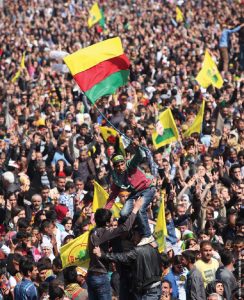
As the First World War drew to its end, U.S. president Woodrow Wilson’s famous Fourteen Points called for a settlement that would permit nations to determine their own fate.
While we may question the intellectual consistency of this demand, as the United States itself had recently joined the ranks of imperialist powers with overseas possessions, it raised undeniably high hopes.
For the losing side of the war, especially Germany, it held the promise of a peace among equals. For the people chafing under foreign masters, it held the promise of liberty.
However, the settlements that eventually emerged satisfied none. Attempts to revise the Treaties of Versailles, Trianon and Sèvres soon turned entire continents into bloodlands during the 1930s and 1940s and undermined the legitimacy of nationalism as the ideological conflict between capitalism and communism roughly divided the world into two camps following the horrors of the Second World War.
The steady, voluntary transformation of national sovereignty into shared sovereignty, especially on the European continent, and the ”thinning“ of borders thanks to modern transportation and telecommunication technologies following the end of the Cold War, spelled the anticipated end of nationalism.Yet it has never gone anywhere.
The externalities of globalization, some genuine, some perceived, have re-animated nationalistic grievances and solutions, with the America First language of Republican Donald Trump and Brexit as obvious examples.
The world also remains a smoldering cauldron of ancient aspirations for statehood and the list below tracks the most populous people sharing common traits such as language, culture and history, among others, without their own internationally recognized state.
This list points to the central problem that continues to confront Wilson’s concept of self-determination. As Canadian historian Margaret MacMillan asked, did he really intend that any people who called themselves a nation should have their own state? What made a nation? If a nation is not self-governing, should it be? How much self-government suffices? “Could a nation, however, defined, exist happily within a large multinational state?” MacMillan asks.
Canada, for example, is home to a French-speaking people occupying a relatively well-defined territory (the Québécois in the Province of Quebec) and to hundreds of indigenous First Nations with historical, yet vague — often overlapping, sometimes non-contiguous — territorial claims. Other federal states, such as Nigeria and India, which play a prominent role on this list, are also home to many nations, all of which aspire to varying degrees of autonomy, if not outright statehood.
This list arranges entries numerically in descending order with all population figures — unless otherwise stated — drawn from James Minahan’s Encyclopedia of the Stateless Nations, perhaps the most authoritative account on the subject. All of his figures are estimates from 2002. More contemporary figures are available in some cases, but often vary widely from source to source, so we erred on the side of caution. The list below supplements Minahan’s description of the various people with journalistic, as well as non-journalistic accounts.
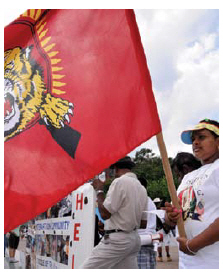
1. Tamils (67 million)
Eight years ago, a suicide bomber of the Liberation Tigers of Tamil Eelam tried to kill Maithripala Sirisena. Today, many of the 67 million Tamils living inside and outside Sri Lanka see Sirisena as a personification of reconciliation.
He was serving as minister of agriculture in the government of former Sri Lankan president Mahinda Rajapaksa when the would-be assassin attacked his convoy while it was travelling through the capital of Colombo. While Sirisena survived the attack, it killed one of his aides during what would be the final stages of an unsuccessful Tamil insurgency against the Sinhalese majority of Sri Lanka.
The insurgency lasted nearly 26 years and ended in May 2009 when government forces launched an attack against the remaining Tigers in their last stronghold. The attack killed most of their senior leaders and approximately 40,000 others, most of them civilians, according to United Nations estimates. Overall, the UN estimates the conflict killed up to 100,000.
Yet the failure of Rajapaksa to win the peace prompted Sirisena to break with Rajapaksa, whom he sensationally defeated during presidential elections in January 2015.
Sirisena’s victory has stoked hopes for a better future among the Tamils of Sri Lanka, who make up about 15 per cent of the country’s 22 million people.
They (along with Sri Lanka’s Muslim minority) made up an important part of the winning coalition that catapulted Sirisena into office on promises of political reforms designed to curb what critics had called Rajapaksa’s creeping authoritarianism.
Sirisena’s government has since promised to release hundreds of Tamil detainees and return much of the Tamil land in the north and east of Sri Lanka, where the Tigers sought to create an independent Tamil state. Sirisena has also announced plans for a truth and reconciliation commission in a bid to heal the many wounds on the Sri Lankan body politic.
The country (which was called Ceylon until 1972) has not only experienced decades of ethic strife, but also two Marxist insurgencies, since its independence nearly 70 years ago. Sirisena was once a communist insurgent himself.
Sirisena’s policies towards the Tamil population of Sri Lanka appear to reverse decades of ethnic discrimination that had previously fuelled Tamil nationalism and, by extension, debilitated Sri Lankan development.
“For the Sinhalese people to live happily in this country,” he has said repeatedly, “the minority communities must also be happy.”
This attempt at national reconciliation also has regional, even global implications. India — home to 60 million Tamils — has previously criticized the failure of Sri Lanka to grant its Tamil population greater autonomy.
Ethnic and linguistic ties between Tamils living in India and Sri Lanka run deep, dating back 3,000 years. As a Dravidian people, they represent one of the indigenous peoples on the Indian subcontinent and share the same language. Most Indian and Sri Lankan Tamils — along with much of the Tamil diaspora living across the world, including Canada — are also Hindus, so it is not surprising that Indian Prime Minister Narendra Modi, a Hindu nationalist, became the first Indian leader to visit Sri Lanka in nearly three decades when he stopped there in 2015, fewer than two months after Sirisena had secured his victory over Rajapaksa, who had been building stronger ties with China, India’s continental rival.
Sirisena, for his part, chose India as his first official overseas trip.
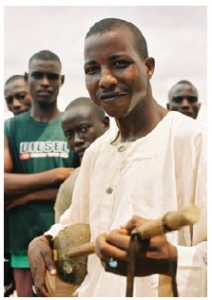
2. Hausas (39.3 million)
While many outside of West Africa are likely unfamiliar with the Hausas, it is highly probable they might have heard a phrase from the Hausas’ language — Boko Haram, which The Economist translates as “western education is forbidden.”
A jihadist group under said name has been pillaging parts of northeastern Nigeria for at least seven years, during which it has killed at least 20,000 people. Boko Haram grabbed glaring global headlines in April 2014 when it abducted 276 Nigerian schoolgirls. This incident inspired the global #BringBackOurGirls social media campaign supported by American First Lady Michelle Obama and Pakistani Nobel Peace Prize winner Malala Yousafzai that drew attention to the common practice of sexual slavery among all jihadist groups.
Unfortunately, horrific events elsewhere have since diminished global attention to the plight of northeastern Nigeria, the Hausas’ heartland. Overall, 30 million reside in Nigeria, according to Minahan. About 5.83 million live in Niger. Countries with smaller communities include Benin, Togo, Cameroon, Ghana, Sudan and Burkina Faso. Their language is also the lingua franca of much of West Africa.
Most Hausas are Sunni Muslims, a historical legacy of their location at the southern terminus of the Saharan caravans that spread Islam south and slaves north of the equator.
Relations between the Hausas in the Muslim north of Nigeria and the other major ethnic groups in the largely Christian south of Nigeria have never been easy, either before or after modern-day Nigeria had declared its independence from the United Kingdom in 1960.
As The Economist notes, Nigeria did not exist until British colonialists drew a line around hundreds of “fractious ethnic groups.” Among these, three major groups dominate: the Muslim Hausa in the north; the Christian Yoruba in the west; and the Christian Igbos in the south.
While the southern Yorubas (see later entry), Igbos (see later entry) and other Christian groups rapidly modernized, the Hausas retained their traditional structures centred on Sharia law. The discovery of oil in southern Nigeria only deepened the socio-economic and political differences between the competing ethnicities. Fearing domination by groups that they had once enslaved, Hausa leaders considered various schemes to either subdue the other groups or form their own state.
In the end, the Hausas regained power commensurate with their numbers, often by brutal methods, as was the case between 1967 and 1970 when they crushed an unsuccessful attempt by the Igbos to secede from Nigeria (see later entry).
Decades of Muslim military governments eventually ended in the late 1990s when international pressure forced the various ethnic groups into a democratic power-sharing agreement.
However what Minahan has called a “volatile mix of religion, ethnic nationalism and perceived marginalization” has once again stoked Hausa nationalism and its companion, Muslim fundamentalism. This said, it is important to note that many of Boko Haram’s victims are Muslims themselves. In fact, reports indicate that the group has split over the question of whether they should continue to target mosques and fellow Muslims.
3. Andhras (38.5 million)
British-Indian novelist Salman Rushdie famously described modern-day India and Pakistan as midnight’s children, an allusion to the partition of British India as Aug. 14 turned into Aug. 15, 1947.
This monumental event, which led to the death and displacement of millions, loomed in the background in 2014 as the state of Andhra Pradesh experienced its own bifurcation.
As the calendar flipped from June 1 to June 2, Andhra Pradesh lost almost 115,000 square kilometres, or 42 per cent of its pre-partition territory, to the newly formed state of Telangana, India’s 29th federal state.
What accounted for this split? Simply put, the two major ethnic groups that shared pre-partition Andhra Pradesh, the Andhras and the Telanganas (see later entry), did not get along, despite sharing several traits.
They include, among others, membership in the larger Telugu nation and use of the Telugu language, a Dravidian language spoken by 74 million people and the most widely spoken language in India next to Hindi.
These similarities, however, did not stop the two groups from developing distinct identities rooted in geography and history rather than ethnicity, language, religion or caste, according to Minahan. (Linguists note the Telanganas speak a dialect of Telugu that includes many Urdu words and they absorbed many Muslim influences and traditions).
While the Andhras welcomed the formation of a federal state that encompassed all Telugu speakers in India in 1956, tensions between the two ethnic groups frequently erupted into violence.
As Minahan says, even the smallest cultural differences (Andhras prefer coffee, Telanganas prefer tea) “could spark bloody riots” between the two groups, which eyed each other with considerable suspicion throughout the decades, both groups clinging to various stereotypes of each other.
Andhras considered the interior Telanganas backwards, while the Telanganas considered the coastal Andhras, located along the Bay of Bengal, oppressive.
Not surprisingly, both groups have harboured radical voices, calling for separate, autonomous states. The creation of Telangana through the Andhra Pradesh Reorganisation Act appears to have satisfied that agenda, as far as the Telanganas are concerned.
As for the Andhras, the partition of Andhra Pradesh marks yet another turn in their long history, which reaches back to at least to 1000 BC when the first written references to them as a distinct nation appeared. And in a way, it confirms the Sanskrit name of Andhra Pradesh — Land of the Andhras.

4. Malayalis (34.6 million)
As already mentioned, the current contours of post-partition India reflect a series of choices, some forced, some voluntary, made by the various people set to reside in the new state.
This was certainly the case for the Malayalis, whose homeland occupies a tropical coastal plan on the Arabian Sea, rising to the rocky highlands of the Cardamon Hills and the Western Ghats in the interior.
The Malayalis are Dravidian, the descendants of people whom the ancient Aryans had driven into southern India, and speak Malayalam, a language based on Old Tamil that emerged between the ninth and 12th Centuries.
Records speak of the Malayali homeland as far back as antiquity, during which it attracted Jews fleeing the first Roman-Jewish war in the late first Century AD and Syrian Orthodox Christians in the early fourth Century AD
These influences — joined later by Arabic-Muslim traditions — intermingled with the dominant local Hindu culture in creating a diverse religious and social spectrum that continues to distinguish the region from the rest of India.
And, as India prepared for independence, Malayali leaders “expressed a preference for association with, but not incorporation into, the Indian state.”
This preference, according to Minahan, is premised on the belief that the Malayali homeland would be better suited for independence than any other state in British India, thanks to its considerable coastline and near-monopoly on several important commodities.
Support for Indian nationalism was also low. In fact, one of the two states that London had established for the Malayalis as a reward for their loyal service to the Empire during the British Raj, proclaimed its own sovereignty on the very day of partition, with the second prepared to follow suit.
The threat of Indian reprisals led to protracted talks that eventually granted both states autonomy under their traditional maharajas, with the Indian government responsible only for defence and foreign relations. The Indian government, however, ended the states’ autonomy in 1948 and combined the two states into a new one. One year later, India pressured the two Malayali maharajas into renouncing their political rights in exchange for retaining their personal privileges and properties. In 1956, India’s central government combined most of the Malayalam-speaking regions into the state of Kerala. Notably, this move actually strengthened Malayali defiance, which centred on the Kerala Socialist Party, a communist party that openly advocated secession from India.
Despite various efforts to stamp out secessionism, tensions between communist separatists and parties loyal to India’s Congress Party remained high through the 1980s. While the collapse of the Soviet Union changed political dynamics in Kerala as economic grievances replaced ideological ones, Malayali nationalism “remains a strong force” in drawing strength from anti-Aryan and anti-Tamil traditions, as evidenced during the early 21st Century, when a dispute over water with the neighbouring state of Tamil Nadu turned into anti-Tamil marches.
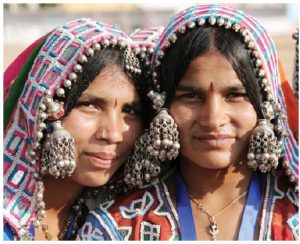
5. Telanganas (31.4 million)
The political and administrative task that confronted the political leadership of modern-day India leading up to partition was nothing less than daunting. It had to unite 562 principalities and 12 provinces that the British had created and it was not inevitable that all of these polities wanted to be part of a secular, Hindu India.
One such reluctant joiner was the principality of Hyderabad, which was dominated by the Urdu-speaking Muslim population centred on the eponymously named city. The state descended into violence in 1947, when its Muslim leadership declared it would not join India and would instead explore some alternate arrangements, be it some form of affiliation with Pakistan or outright independence.
This announcement angered the Telugu-speaking Telanganas living in rural Hyderabad, who launched an insurgency, a move exploited by the Indian army to bring Hyderabad to its heels.
By 1949, it had overthrown Hyderabad’s Nizam and forced it into India. Persistent demands for a Telugu-speaking state eventually inspired India’s central government to merge the Telanganas with the Andhras into Andhra Pradesh with Hyderabad as its capital, on the premise that their shared Telugu language would provide a sufficiently common bond. But as we already heard, the Indian government recently reversed this merger by creating a separate state of Telangana.
Not everybody was happy with the partition of Andhra Pradesh into a residual state and the new federal state of Telangana. Speaking to the BBC, one local described the occasion as a “sad day, because we speak the same language and have no distinct identity. Politicians played a dirty [trick] in dividing the state into two.”
This critique was likely aimed at K. Chandrashekar Rao, who pushed for the creation of the new federal state and currently serves as its minister.
According to The Economist, Telangana covers an area of 115,000 square kilometres and its population of 35 million places it ahead of several countries that border India, including Afghanistan (30 million) and Nepal (28 million).
Proponents of partition note its economic benefits. Whereas the state generated 43 per cent of revenues of pre-partition Andhra Pradesh, it received only 30 per cent of all expenditures. Being part of Andhra Pradesh was therefore a losing proposition, at least on paper.
Perhaps the most controversial aspect of this partition was the designation of Hyderabad as Telangana’s capital. While it accounts for only eight per cent of the state’s population, its dynamic high-tech economy will give Telangana a leg up on Andhra Pradesh in marking a reversal of economic fortunes.
The Andhras were well aware of this and managed to negotiate a 10-year transition during which Hyderabad will serve as the capital for both states, before Andhra Pradesh will have to find its own as both sides finalize their separation.
Whether this mini-partition will quell the ethnic and sectarian tensions that have defined this part of India remains unclear.
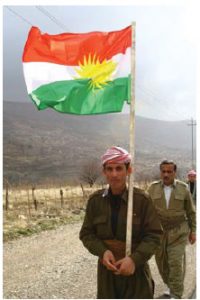
6. Kurds (30 million)
Predictions about the future of the Middle East are likely to produce embarrassment. Foreign Affairs editor Gideon Rose recently wrote that the region “limps on without confidence or permanence” as “a work in progress; from Iraq and Syria to Libya and Yemen, nobody knows how things will look when the dust settles.” When it does, more than 30 million Kurds will hope that they — or at least some of them — will live in their own state, a possibility that haunts regional actors.
Spread mainly across four countries (Turkey, Syria, Iraq and Iran), the Kurds make up the fourth-largest ethnic group in the Middle East and many dream of reviving Kurdistan, a polity that has not existed for centuries. Kurds trace their ancestry to the Assyrians and their identity to the mountainous region that straddles southeastern Turkey, northern Iraq, northwestern Iran and northeastern Syria.
Geography has also created distinct, sometimes mutually unintelligible dialects of the Kurdish language, a fact that has divided Kurds. As Minahan writes, the Kurds “are more an assemblage of clans than a united people, with greater differences in religion, class and regional culture.”
This disunity has made it easy for invaders and outsiders to dominate them. But they are also proud, ferocious fighters, perhaps the best in the region, as their leading role in the fight against the Islamic State (IS) on behalf of the West demonstrates. (Notably, western powers are dropping their resistance to arming the Kurds with heavier weapons over fears that they might use these during a later insurgency).
Kurdish leaders in turn hope that these efforts will earn them their own state.
So what are the prospects of a Kurdish state? The six million Kurds of northern Iraq possess what Oxford’s Eugene Rogan referred to in The Economist as “critical mass.” While they constitute a minority in a larger state (Iraq), they form a majority in a particular part of it that could easily be detached from the rest along plausible borders that capture legitimate geographic claims. Notably, they have enjoyed political autonomy since 1991 and scholars say the region is independent already in all but name.
The Kurds across the Middle East can also count on support —financial and otherwise — from the Kurdish diaspora in Europe (especially Germany) and elsewhere in the developed world.
Finally, their plight has generated international sympathy, a sentiment born out of a long, traumatic history of victimization. As Foreign Affairs Review notes, “the Kurds have been longing for independence since time immemorial,” only to suffer frequent betrayal over the birth of a nation at the hands of local imperial midwives when the possibility of statehood seemed near.
Two such occasions occurred in the first half of the 20th Century alone.
In the Treaty of Sèvres, signed in 1920, Britain and France promised Kurds a homeland carved out of the cadaver of the Ottoman Empire. Three years later, Britain and France reneged on their promise during renegotiations of the treaty and Turkey, eager to preserve its territorial integrity, has repeatedly crushed Kurdish uprisings.
Shortly after the Second World War, Kurds living in Iran declared the Republic of Mahabad. However, the United Kingdom and Soviet Union eventually withdrew their support by allowing the Iranian army to regain control of the region after less than a year in late 1946.
These brief Kurdish sojourns into statehood exploited periods of political instability and the current chaos in the Middle East has yet again revived hopes.
“We have waited long enough,” Sirwan Barzani, a grandson of legendary Kurd leader Mustafa Barzani, told The Economist in 2015. “It has been a hundred years since we were divided between the four devils (as per the Sykes-Picot Agreement). We will be independent within two years.”
While this prediction has not yet come true, it speaks to the confidence — some might say hubris — that currently reigns among Kurdish leaders. Their fight against ISIS is far from over and regional politics might be tricky. While a post-war Syria might accept some level of autonomy for its Kurdish population, Turkey, home to about 14 million Kurds, currently wages an anti-insurgency campaign in its Kurdish region and may yet extinguish, using force, any independent Kurdistan centred in Iraq. In other words, developments outside their control may puncture Kurdish plans yet again. While Turkey and Russia imagine different fates for Syria’s dictator, Bashar al-Assad, they might find common cause against the Kurds, as recently reported. Syrian forces have opened up a front against Kurdish forces in Syria, further complicating a multi-sided war.
Kurds have frequently found themselves pawns in the games of larger players and this time might not be very different.
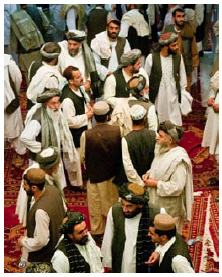
7. Pashtuns (28.85 million)
The Pashtun homeland occupies a mountainous region in South Asia that lies partly in the Himalayas and the Hindu Kush, west of the Indus River, stretching as far as the Seistan Plateau. Chains of bare, rugged mountains that include the Khyber Pass are interspersed in the fertile plains and valleys of this region. In short, it runs across the northwestern part of Pakistan and southern Afghanistan — or to be more prosaic, the graveyard of empires. As Minahan writes, centuries of invasions by Afghans, Persians, Indians and Mongols have “converted the Pashtun tribes into a warrior people, possibly the best guerrilla fighters in Asia. The tribes united only when threatened, more often warring among themselves.”
This tendency first revealed itself in the late 19th Century when Pashtun tribes rejected the arbitrary division of their homeland by the British. Pashtun resistance to foreign rule continued during the final decades of the British Raj and eventually turned against the ethnic Punjabis and Mohajirs who sought to dominate the newly created Pakistan following the partition of the Indian subcontinent in 1947 into Hindu-dominated India and Muslim-dominated Pakistan.
Despite being co-religionists, the various ethnic groups of Pakistan struggled to reconcile their grievances and most of the country’s Pashtun region remained outside Islamabad’s control in the 1950s and 1960s. Pashtun nationalism received another boost in 1971 when nationalists pressed for their homeland to follow the Bengalis of East Pakistan — modern-day Bangladesh — into independence. The region also remained a source of tension with Afghanistan, whose Pashtun population simply ignored the artificial border drawn decades earlier.
The 1979 Soviet invasion of Afghanistan, ostensibly designed to prop up Moscow’s failing client government, further complicated relations between Afghanistan and Pakistan. Playing on fears of a Soviet push into Pakistan, its military government became a favourite recipient of American and Saudi assistance — assistance funnelled into the hands of various local Islamist warlords, namely the mujahideen. Most of these groups were rival Pashtun tribes, whose only source of agreement was their fervent hatred of the godless Soviets and their Kabul clients, a powerful force when combined with shoulder-launched stinger rockets.
The war also sent six million refugees — 85 per cent of them ethnic Pashtuns — into the Pashtun tribal areas of northwestern Pakistan. This influx in turn sowed the seeds for the rise of the Taliban, a militant Islamic organization recruited out of Afghani Pashtun religious students and supported by Pakistani intelligence.
Following the inglorious withdrawal of the Soviet Union in 1989, Afghanistan descended into a civil war between Pashtun and non-Pashtun that eventually ended in favour of Pakistan’s client, the Taliban. They in turn offered sanctuary to Al-Qaeda under the leadership of Osama bin Laden, a Saudi who joined the mujahideen in their struggles against the Soviets, then used Afghanistan as a staging ground for the attacks of 9/11.
Western troops led by the United States have since chased the Taliban out of power, but Pashtun grievances continue to threaten Afghanistan’s stability. The same can be said about Pakistan, where radical Pashtuns continue to agitate against the central government, whose policies smack of incoherence.
On the one hand, it has encouraged Pashtun nationalism in rebuffing Soviet advances in the region during the 1980s and then turning Afghanistan into a client state during the 1990s.
On the other hand, Islamabad has failed to clarify the status of Pakistan’s Pashtun area. Despite American aid, it has failed to pacify the area by force, thereby giving indirect aid to Pashtun and foreign fighters training their guns against western forces and allies in Afghanistan. It is also worth remembering that American Navy Seals killed bin Laden in a mainly Pashtun region of Pakistan. Yet Pakistan has also resisted peaceful alternatives for the region, including federalism, for fears that it might encourage a separate Pashtun state, already a de-facto reality.
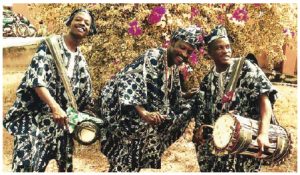
8. Yorubas (26.5 million)
Scholars have historically spoken of the Yorubas as a linguistic rather than ethnic community centred around Yorubaland, which spans Nigeria, Togo and Benin. Sizable communities of speakers also exist in other West African countries, Europe, the United States, Brazil and the Caribbean. In fact, Minahan notes that Yoruba culture and religion have “profoundly influenced the African diaspora in Brazil and the Caribbean, even among the communities where the language has been lost.” Recent research, however, has identified a growing ethnic consciousness among the Yoruba, a development linked to the post-colonial politics of Nigeria.
As the second largest group in Nigeria, the Yorubas, most of whom are Christians, faced a complicated choice in the late 1960s as the country confronted a secessionist movement by the Igbos against the country’s central government, which was dominated by the largest ethnic group, the Muslim Hausas. Should they side with their Christian co-religionists — the Igbos — or with the Hausas, who sought to protect the integrity of the country and, with it, access to the oil wells of southeastern Nigeria? While some Yorubas supported and fought for the breakaway Republic of Biafra during a civil war (1967-1970) that killed millions (see later entry), their political leaders and generals ultimately sided with the Muslim-dominated federal government to preserve and protect the southeastern oil fields.
This calculated, some might say cynical bargain did not ease tensions among the various ethnic groups in the decades that followed. As Minahan says, “continued domination” of the Nigerian government by the Muslim-controlled military fuelled Yoruba nationalism in the 1980s, a phenomenon perpetuated by economic problems and the pro-Islamic policies of government.
Tensions exploded in 1993, when the Muslim military government annulled the results of free presidential elections brokered by the international community after said elections produced a result in favour of the Yoruba. Feeling denied and destined to be dominated by the Hausas, Yoruba nationalism witnessed what Minahan calls a “dramatic increase” not seen since the 1960s. Its contemporary vehicle is the Oodua Peoples Congress, a militant group formed in 1997. The group remains a voice for Yoruba concerns, but has taken measures to appear more moderate, most recently by expelling corrupt members whom it deems have hurt its image.
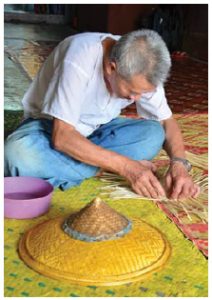
9. Northern Tai (24 million)
Three groups dominate headlines about ethnic unrest in China: the Mongols, the Uyghurs and the Tibetans. However, this trio merely hints at the ethnic diversity and potential divisiveness characterizing China. The emerging global power currently recognizes 56 distinct ethnic groups within its far-flung borders — the majority Han Chinese (which account for about 92 per cent of China’s 1.36 billion people) and 55 other groups. And, there are the Northern Tai people. Related to the Thai of Thailand, they include the Chuang (Zhuang) with an estimated 17 million, the Puyi (Buyi/Bouyei) with an estimated 3.1 million and the Tung (Dong) with an estimated three million. Described as the “water dwellers” for building settlements on piles or stilts near the water, the Chuang constitute the largest sub-group of the Northern Tai, whose territory lies in southern China south of the Nan Mountains.
The region borders modern-day Vietnam and its relatively remote nature allowed the Northern Tai to develop fairly autonomously of whomever happened to rule the rest of China during its long, tumultuous history.
During the early 20th Century, it became the base of the Nationalist revolution led by Sun Yat-sen, the founder of modern-day China, and a strategic region of nationalist resistance against Japan during the Second World War. Communist victory during the resumed Chinese civil war after the Second World War constituted a turning point for the region. While the Northern Tai had initially greeted Communist forces as liberators, their harsh rule inspired a French-assisted rebellion against Beijing. Communist reprisals killed thousands. Decades of repression and assimilation by the Han Chinese followed. As Minahan notes, the Northern Tai and other non-Han people in the region “retain a strong urge to unite in an independent state” despite Chinese Han domination. Specifically, nationalists claim “that the Northern Tai and other non-Han people of the region “are a nation by all modern criteria.” They have “a long and separate history, separate language and culture and a compact national ethnic area.” Ironically, China’s rise as a global economic power may further spur separatism, as the Northern Tai (like so many other minority groups) have largely found themselves on the losing end of China’s modernization and industrialization. This development, Minahan says, has prompted the Northern Tai to return to their ethnic roots and “could reverse their assimilation into Chinese culture.”
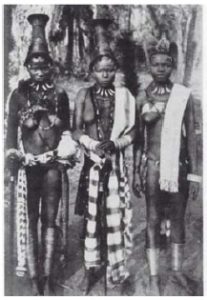
10. Igbos (23.2 million)
Almost half a century ago, horrific reports of mass death and destruction from western Africa shocked audiences around the world. These haunting accounts included heartbreaking images of lethargic Igbo children, their black bellies bloated by hunger, as the Nigerian government sought to starve them, their parents and their leaders into submission for their attempted secession.
As The Economist notes, Nigeria did not exist until British colonialists drew a line around hundreds of “fractious ethnic groups.” Among these, three major groups dominate: the Muslim Hausas in the north; the Christian Yorubas in the west; and the Christian Igbos in the south.
Relations between these regions and their people have been rife with strife ever since and reached a new deadly dimension in January 1966 when disputes over the use of oil revenues inspired Igbo military officers to stage a successful coup against the Muslim-dominated central government of Nigeria.
A counter-coup restored Muslim dominance mere months later and triggered an orgy of violence against the Igbos that killed tens of thousands and displaced more than a million of them.
These events eventually inspired Igbo leaders to declare the independence of southeastern Nigeria after Lagos had refused demands for greater autonomy. The new state that emerged on May 30, 1967, named itself the Republic of Biafra after the part of the Atlantic Ocean that bordered the new state and soon found itself under attack by federal Nigerian forces under the leadership of Gen. Yakubu Gowon, whose government could count on continuing support from an odd coalition of international powers that included Cold War adversaries Britain and the former Soviet Union, which supplied the government with arms.
As for the Republic of Biafra, four African states (Ivory Coast, Tanzania, Zambia and Gabon) recognized it. It also received material support from several western governments and non-governmental organizations. France, for example, became the principal supplier of arms to the breakaway state. Its fight for survival also attracted several somewhat shadowy figures, including Rolf Steiner, a German-born soldier of fortune.
Despite his efforts and those of others, the Biafran cause faced considerable odds against the numerically superior forces of the central government, which also used hunger as a weapon against the ill-equipped and ill-prepared secessionists. Notwithstanding high-profile food deliveries from western countries, the Nigerian blockade of Biafra proved highly effective. While the actual fighting killed an estimated 100,000 people over three years, anywhere between 500,000 and two million civilians died from the effects of the war, with hunger claiming most of them. The Igbos’ unsuccessful claim for independence ended in January 1970 and marked a watershed in the history of international affairs.
What Minahan calls the “most savage war” on the African continent was also the first globally televised war and led to the formation of the non-governmental organization Doctors without Borders.
The war also remains a source of historical grievance for the Igbos, who continue to find themselves marginalized in Nigeria. Most of them — like most Nigerians — were born after the war, yet it remains a part of their identity and the recent rise of secessionist sentiments in the region has referenced it.
Wolfgang Depner holds a PhD from the University of British Columbia, where he has taught political science and philosophy. He lives and writes in Victoria, B.C.





